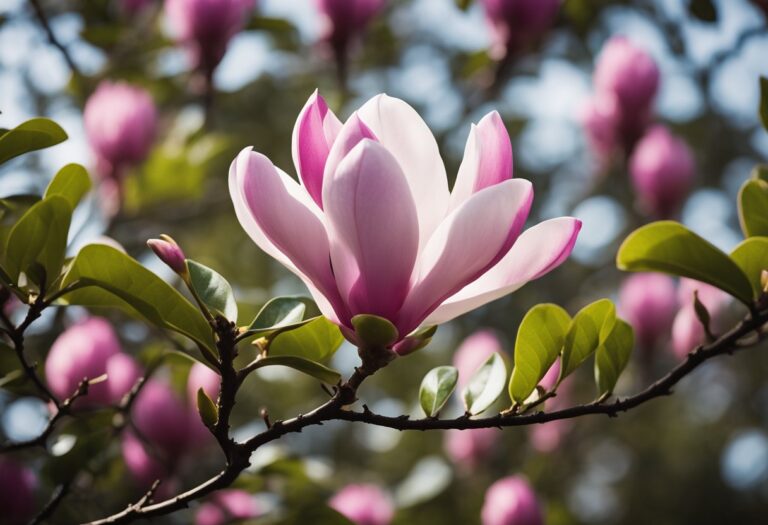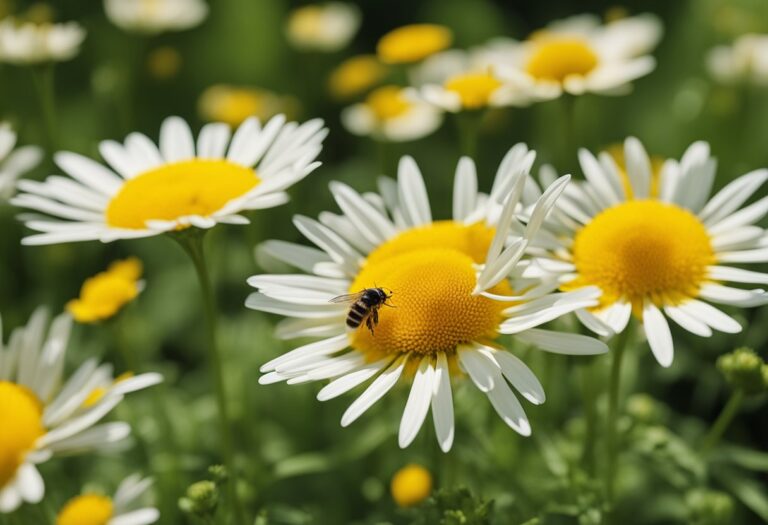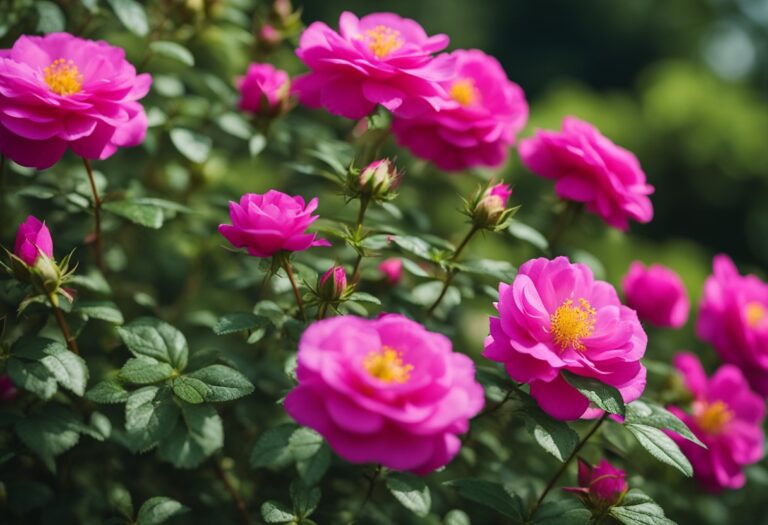Overview
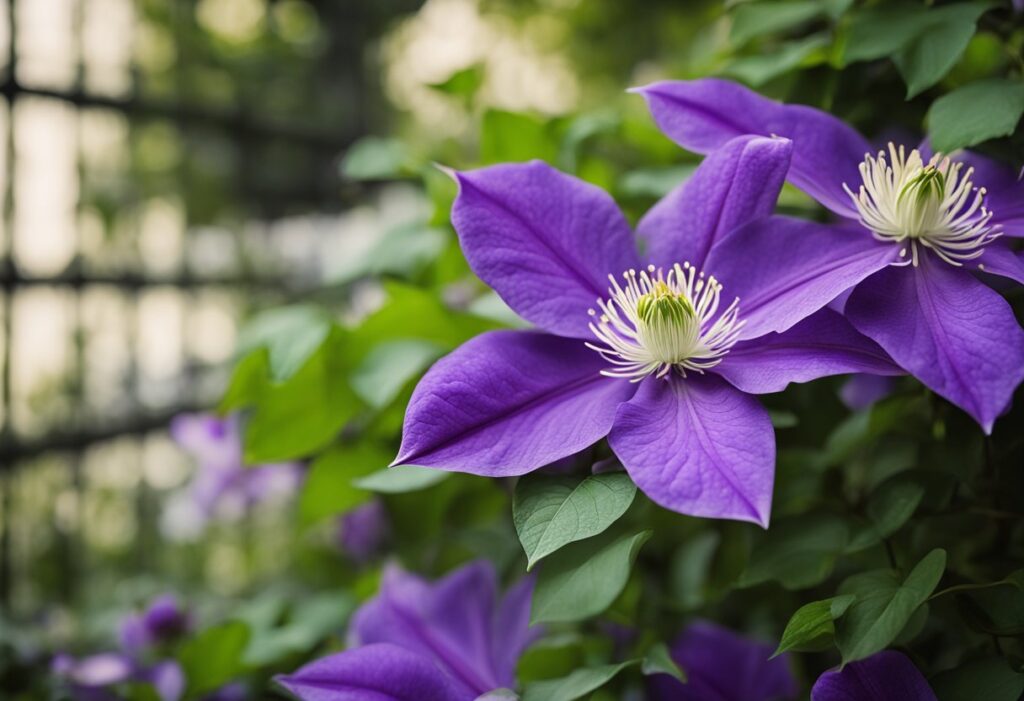
Clematis ‘Will Goodwin’ is renowned for its vibrant purple-blue flowers and adaptability to a range of hardiness zones. It’s a popular choice for gardeners looking to add vertical interest to their gardens.
Origin and Breeding
Clematis ‘Will Goodwin’ is one in a long line of hybrid clematis plants. Its lineage traces back to breeding efforts aimed at producing plants with specific characteristics, such as flower color, form, and flowering times. Hybrid clematis varieties like ‘Will Goodwin’ often result from crossbreeding efforts to combine the most desirable traits of different parent species.
Cultivation Details
Planting Location: Clematis ‘Will Goodwin’ thrives best when its roots are kept cool and shaded while the vine itself receives ample sunlight.
- Support: It requires a trellis or similar structure to support its growth.
- Soil Moisture: Ensuring uniformly moist soil, without allowing it to dry out, is critical for this variety.
- Pruning Group: ‘Will Goodwin’ belongs to Pruning Group 2. You should prune it in late winter or early spring. Remove dead and weak shoots, and cut back the remaining shoots to about 6-9 inches above a pair of strong buds.
- Hardiness Zones: This variety is suitable for USDA hardiness zones 4 through 8, indicating a wide range of climate adaptability.
The aspect of careful pruning and providing the right conditions for root growth are essential for the successful cultivation of ‘Will Goodwin’.
Care Instructions

Proper care is essential to bring out the best in your Clematis ‘Will Goodwin’. Following the right soil, watering, and sunlight guidelines will ensure a healthy growth and vibrant blooms.
Soil Requirements
Your Clematis ‘Will Goodwin’ thrives in well-draining soil that retains moisture without becoming waterlogged. To maintain these conditions:
- Use a mix of loamy soil amended with compost or well-rotted manure.
- Ensure pH is slightly alkaline to neutral; a pH of around 7.0 is ideal.
Watering Regimen
Consistent watering helps Clematis ‘Will Goodwin’ establish a robust root system and keep flowers blooming.
- During the growing season, water to keep the soil uniformly moist, not soggy.
- Apply 1 inch of water once a week, adjusting for rainfall and temperature.
- Employ a mulch to keep the roots cool and moisture levels stable.
Sunlight and Positioning
Positioning your Clematis for the right balance of light and shade is crucial.
- Plant where the vines receive 4 to 6 hours of sunlight daily.
- Keep the root zone cool and shaded—consider planting low-growing plants around the base.
- Provide a trellis or support for the vine to climb.
Growth and Blooming
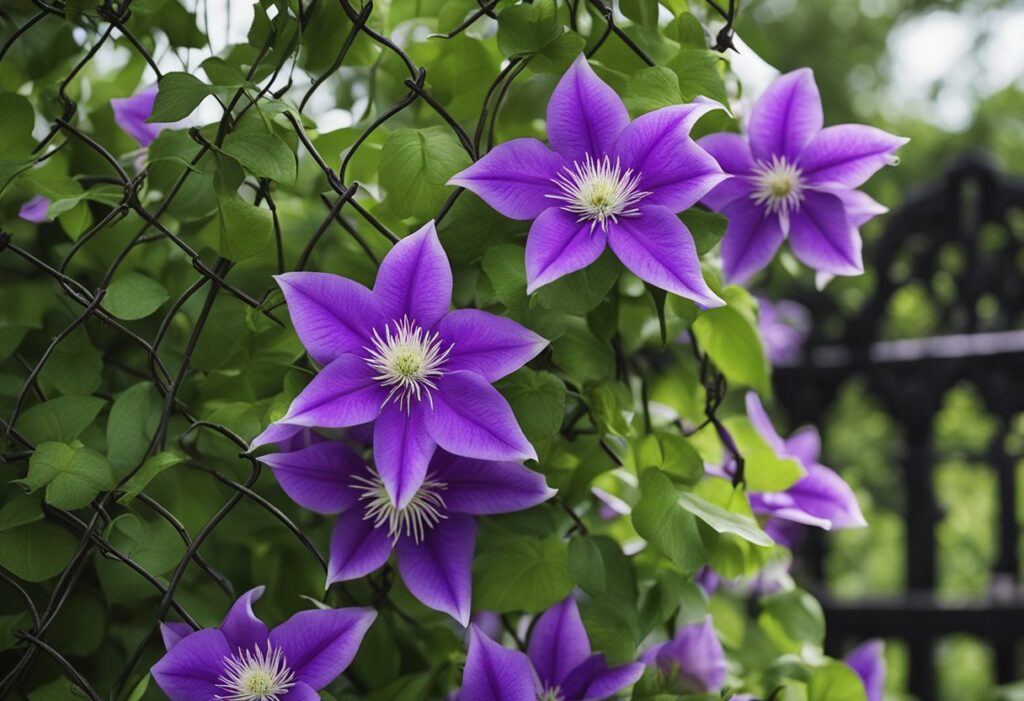
Your Clematis ‘Will Goodwin’ is a luxurious flowering vine that offers vibrant blooms and unique characteristics. Understanding its bloom properties and seasonal growth patterns ensures you enjoy its full beauty.
Bloom Characteristics
First Bloom: May-June
Second Bloom: July-September
Flower Diameter: 6 to 8 inches
Color: Lavender to light blue flowers
Petals: Overlapping, wavy edges
Center/Stamens: Creamy white to golden
Your ‘Will Goodwin’ blooms twice annually. The initial flowering happens on the previous year’s growth, boasting large, eye-catching blooms ranging from lavender to light blue. You’ll observe the flowers have wavy margins, adding a unique texture to your garden. The stamens at the flower’s center offer a creamy white to golden hue, providing a striking contrast.
Seasonal Growth Patterns
- Early Summer: First flush on previous year’s stems
- Late Summer: Second flush on current year’s growth
In early summer, your clematis showcases the first floral display through stems grown in the previous year. As the season progresses, you should notice a second wave of flowers developing on the new growth. This growth cycle indicates that your Clematis ‘Will Goodwin’ is a Group 2 clematis, which may require light, optional pruning after the first bloom to maintain its shape and health.
Common Issues

When cultivating Clematis ‘Will Goodwin’, you may encounter specific pests and diseases that can affect your plant’s health. Understanding and managing these problems early can ensure the long-term vitality of your vines.
Pest Management
Your Clematis ‘Will Goodwin’ can attract various pests that need to be monitored and controlled. Regularly check for the presence of aphids, vine weevils, slugs, snails, scale insects, and earwigs.
- Aphids: Small green or black insects that can usually be found on new growth or the undersides of leaves.
- Vine Weevils: Look for notches in leaf edges and wilting.
- Slugs/Snails: Indications include irregular holes in leaves and slimy trails.
- Scale Insects: Look for bumps on stems and leaves.
- Earwigs: Noticeable by irregular holes and damage to flower petals.
Address these pests promptly through suitable methods such as insecticidal soaps for aphids and mating disruption pheromones for vine weevils. Encourage natural predators like ladybugs and birds in your garden, which can help control aphid populations organically.
Disease Prevention
Be vigilant to prevent diseases that commonly affect Clematis ‘Will Goodwin’, especially Clematis wilt or stem rot, which is potentially fatal if left untreated.
Common symptoms of diseases to watch for:
- Clematis Wilt: Sudden wilting of stems and leaves, turning them black. Often stem lesions occur.
- Powdery Mildew: White, powdery fungal spots on leaves.
- Leaf Spots: Brown or black spots on the leaves.
- Rust: Orange or yellowish powdery substance appears under the leaves.
Ensure your Clematis ‘Will Goodwin’ is planted in well-draining soil and avoid overwatering to prevent diseases like wilt and rot. Prune any affected stems immediately upon notice to control the spread of the disease. Fungicide applications may be necessary for severe issues like powdery mildew and leaf spots. Regular pruning also promotes air circulation, which can help in reducing the incidence of these diseases.
Landscaping and Usage
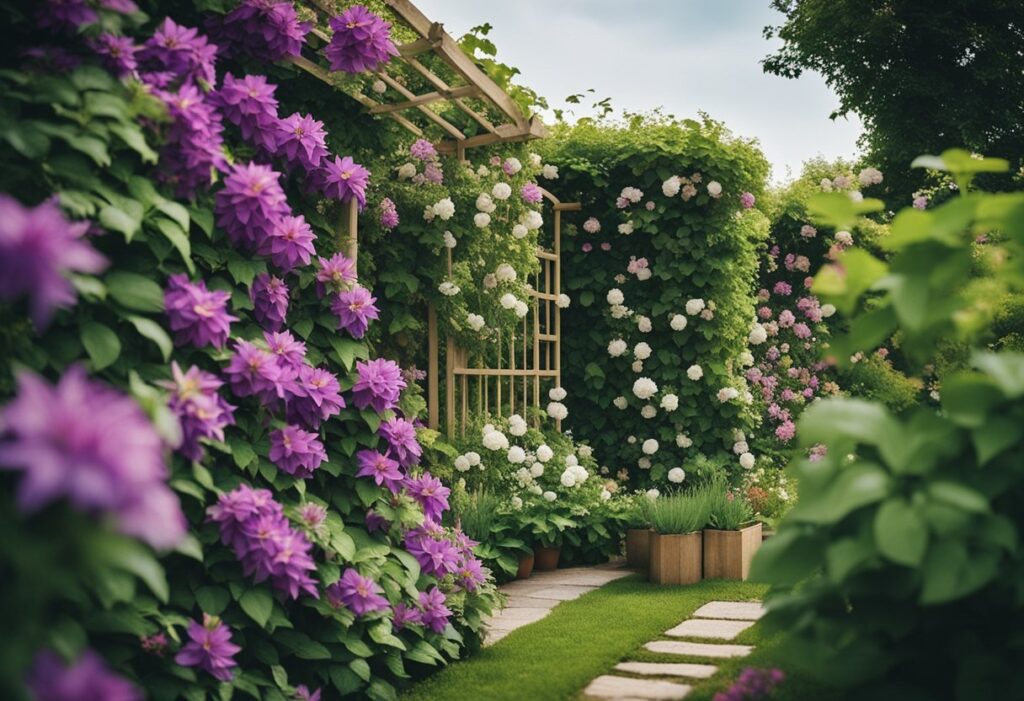
In the landscape, Clematis ‘Will Goodwin’ offers a unique blend of visual interest and versatility. Its vibrant flowers and climbing nature make it a standout addition to any garden.
Companion Plants
Your Clematis ‘Will Goodwin’ thrives in the company of plants that offer contrasting forms or textures. Some notable companions include:
- Trees: Small deciduous trees can serve as natural supports for the vine.
- Shrubs: Pair with shrubs like Hydrangea or Rose to juxtapose the clematis’s delicate vines against a solid backdrop.
- Perennials: Plant alongside Hostas or Ferns for a lower layer of contrasting foliage.
Design Considerations
When incorporating Clematis ‘Will Goodwin’ into your garden design, pay attention to:
- Support: Ensure support structures like trellises, fences, or pergolas are available for the vine to climb.
- Texture Balance: Balancing the vine with coarser or finer textured plants can enhance the overall composition.
- Color Palette: Its purple-blue flowers work well with a range of colors, from pastel hues to vibrant oranges and yellows.
Frequently Asked Questions

Caring for Clematis ‘Will Goodwin’ involves understanding its specific needs for sunlight, pruning, and support. These FAQs will guide you in nurturing your plant for optimal growth and blooming.
How should I care for a Clematis ‘Will Goodwin’ plant?
Your Clematis ‘Will Goodwin’ requires consistent moisture with well-draining soil. Mulch can help keep the roots cool. It’s best to fertilize this plant in early spring and again in midsummer with a balanced fertilizer to encourage growth and flowering.
What are the ideal growing conditions for a Clematis ‘Will Goodwin’?
This clematis thrives in a location with 5-6 hours of sunlight a day. The roots prefer to stay cool, so providing shade at the base is recommended. Soil should be mixed with sand and organic matter, and a handful of lime might be beneficial to adjust the pH.
How often should Clematis ‘Will Goodwin’ be pruned, and what is the correct method?
Prune your Clematis ‘Will Goodwin’ in late winter or early spring. Remove dead and weak shoots, and cut back the remaining shoots to 6-9 inches above a couple of well-developed buds. This stimulates the growth of new blossoms.
What type of support structure is best for Clematis ‘Will Goodwin’ vines?
A strong trellis, arbor, or other sturdy support caters to the Clematis ‘Will Goodwin”s twining habit. The support should be able to handle the weight of the plant as it grows and ensure the vines have space to climb.
How does Clematis ‘Will Goodwin’ compare to other clematis varieties in terms of flowering?
Clematis ‘Will Goodwin’ is known for its large, lavender-blue flowers and repeat blooming habit. It starts flowering from the previous season’s growth and continues with new growth through the season, which distinguishes it from some other varieties that might only bloom once.
Can Clematis ‘Will Goodwin’ thrive in shaded areas?
While Clematis ‘Will Goodwin’ can handle some shade, it performs best with at least 5-6 hours of sunlight.
If the base is shaded and the blooms can reach the sun, it will generally still do well. However, too much shade can reduce blooming.







